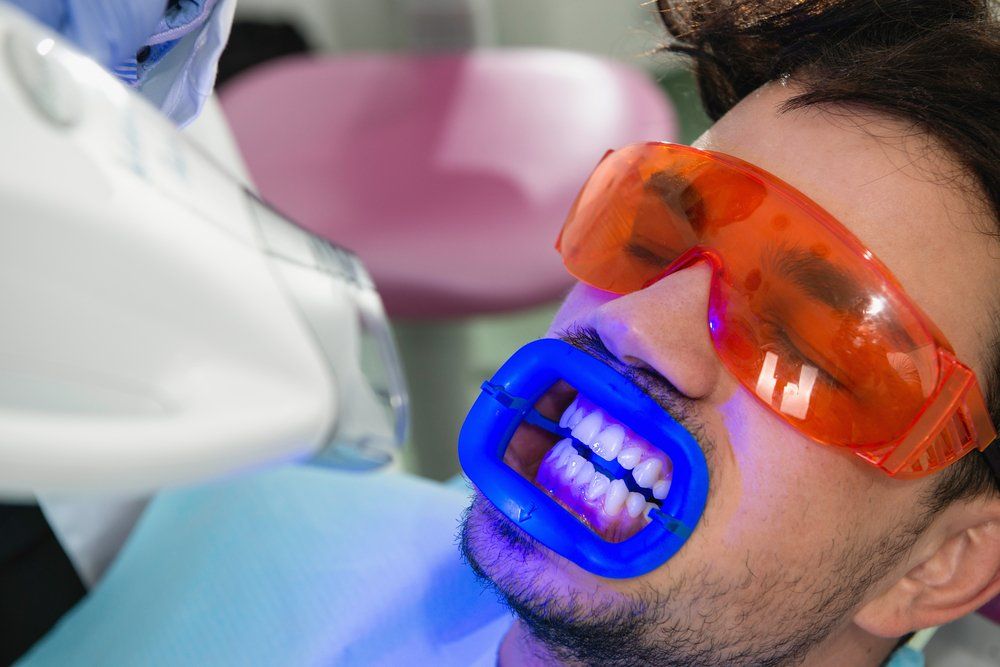How Often Should You Change Your Toothbrush
Most people are surprised to learn that the average toothbrush contains over 700 bacteria. Fungi, viruses, and tiny microorganisms sit on the bristles of toothbrushes worldwide, establishing a foundation for diseases to form.
If the thought of bacteria dwelling on the toothbrush you routinely place in your mouth doesn’t pique your curiosity about changing your oral hygiene habits, think about the poor physical condition of your toothbrush. Over time, the bristles on your brush become fanned out and spread apart.
Keeping the threat of oral bacteria and the physical appearance of your toothbrush in mind, the critical question is how often should you change your toothbrush?
Where Are the Bacteria on Your Toothbrush Coming From?
The number one source of bacteria on your toothbrush is in your mouth. You routinely use your brush to clean the plaque, food, and odor-causing germs from your mouth. Because most people don’t use soap or bleach on their brush after using it (which we don’t recommend), there will undoubtedly be some bacteria present on your toothbrush.
It’s also important to consider where you store your toothbrush. Many people frequently keep their toothbrushes close to the sink or even the toilet. Brushes placed too close to either of these bathroom fixtures are at risk of attracting extra unwanted microorganisms.
Lastly, it is essential to remember that how you store your toothbrush matters. Placing your brush in unwashed containers and holders can also facilitate the growth of bacteria.
When Should You Change Your Toothbrush?
Despite the presence of bacteria on toothbrushes, the solution here is not to brush your teeth less! That would undoubtedly lead to a variety of other harmful dental conditions. The answer is to replace your toothbrush regularly.
Between the American Dental Association (ADA) and many licensed dental professionals, it is recommended you change your toothbrush every three to four months. The bristles usually become severely worn within this time frame and are much less effective. It should be noted that most dental professionals have a general rule that trumps this timeline. If you have recently been sick with an infection or virus, dental providers recommend changing your toothbrush right away.
Children may require a toothbrush replacement sooner than adults. Kids usually brush their teeth more rigorously than their grown counterparts, so the wear and tear on their brushes may be more evident before the three-month mark.
If you happen to be wondering if it matters whether a toothbrush is manual or electric, the answer is no. Bristles are bristles, and it is strongly suggested you change your brush (or toothbrush head) every three to four months.
Caring for Your Toothbrush
While the average person doesn’t feel a toothbrush requires special care and attention, dental professionals are quick to point out that it is essential to follow some important steps:
Rinse
For starters, after you use your toothbrush, it’s essential you rinse it off thoroughly with tap water. Rinsing helps wash away any remaining toothpaste, food, and saliva that may still be present on your brush.
Store in a Dry Place
After you’ve finished rinsing your toothbrush with tap water, it’s imperative to store it in a vertical position to air dry the brush. The keyword here is “air dry.” It’s essential to make sure your toothbrush is completely dry every time you use it.
If you’re accustomed to placing your toothbrush in a closed container after use, it’s time you break that habit. This helps prevent the bacteria buildup present in a storage container like that. It’s best not to even keep your toothbrush in a closed container for traveling purposes. Instead, think about purchasing disposable brushes when traveling away from home.
Be Careful Where You Keep It
As previously mentioned, many bacteria access your toothbrush based on its proximity to the toilet or sink. Splashing water from either one of those sources can result in unwanted germs transferring onto your brush. Therefore, you should find an appropriate place to store your brush to remain away from this type of water.
Additionally, it’s best not to store your toothbrush in a place where it’s consistently touching the brushes of your family members. You certainly don’t want other bacteria from your family members adding to your own. It would be best if you never forgot that your toothbrush is yours alone. It’s never a brilliant idea to share a toothbrush with another person.
Keep a Spare or Two
As you surf the internet or make trips to the store, it’s wise to purchase some extra toothbrushes or toothbrush heads. It’s essential to have these different brushes around the house during those times when you are faced with unexpected challenges (I.e., you get sick, you drop your brush in the toilet, or your young kids get a hold of your brush).
From now on
It’s been said that when people know better, they tend to do better. Now that you know you should be changing your toothbrush every three to four months, you shouldn’t rely on your next dental appointment to make an upgrade. Since you’re aware of the importance of keeping your brush in a dry and secure place, you’ll be careful not to lay your brush down an inch away from the bathroom sink.


